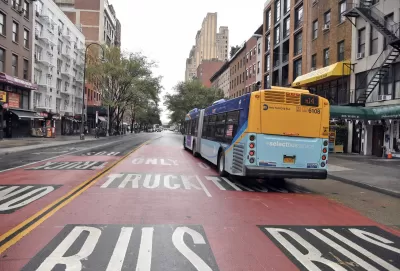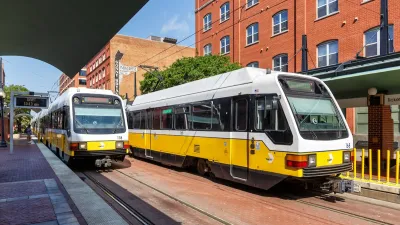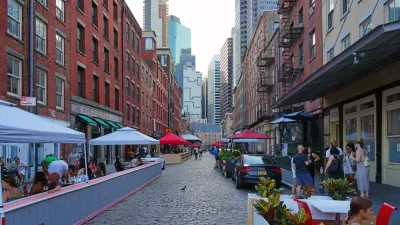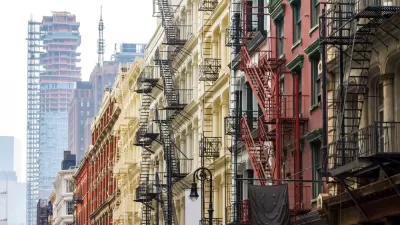The former mayor's administration oversaw several major changes in the city's skyline, streets, and public spaces.

An article by Rachel Holliday Smith describes the changes that have happened to New York City's built environment and skyline during former Mayor Bill de Blasio's administration, which include rezoning, bus lanes, and more supertall buildings.
Some of the changes that impacted the city the most, writes Holliday Smith, are the adoption of outdoor dining and living spaces during the pandemic, programs which the city wants to make permanent. The city also invested heavily in the renovation of city parks in underserved communities and expanded bus and bike lanes.
The article also points to the East Side Coastal Resiliency Project which, while controversial, aims to protect a densely populated neighborhood from flooding and rising sea levels. Another major change: the city's shift of a third of its public housing units to private management using the federal Rental Assistance Demonstration program, which is designed to help cities improve conditions in affordable housing units. Meanwhile, the NYCHA hopes to receive at least $35 billion in assistance funds from the Build Back Better plan in order to meet its $40 billion backlog.
In the past eight years, nine neighborhoods have been rezoned to allow for more density, but critics point out that early efforts focused primarily on low-income neighborhoods, while the results of these rezoning efforts will take years to manifest.
FULL STORY: Skylines and Streetscapes: How New York City Physically Changed in de Blasio Era

Study: Maui’s Plan to Convert Vacation Rentals to Long-Term Housing Could Cause Nearly $1 Billion Economic Loss
The plan would reduce visitor accommodation by 25,% resulting in 1,900 jobs lost.

North Texas Transit Leaders Tout Benefits of TOD for Growing Region
At a summit focused on transit-oriented development, policymakers discussed how North Texas’ expanded light rail system can serve as a tool for economic growth.

Using Old Oil and Gas Wells for Green Energy Storage
Penn State researchers have found that repurposing abandoned oil and gas wells for geothermal-assisted compressed-air energy storage can boost efficiency, reduce environmental risks, and support clean energy and job transitions.

Santa Barbara Could Build Housing on County Land
County supervisors moved forward a proposal to build workforce housing on two county-owned parcels.

San Mateo Formally Opposes Freeway Project
The city council will send a letter to Caltrans urging the agency to reconsider a plan to expand the 101 through the city of San Mateo.

A Bronx Community Fights to Have its Voice Heard
After organizing and giving input for decades, the community around the Kingsbridge Armory might actually see it redeveloped — and they want to continue to have a say in how it goes.
Urban Design for Planners 1: Software Tools
This six-course series explores essential urban design concepts using open source software and equips planners with the tools they need to participate fully in the urban design process.
Planning for Universal Design
Learn the tools for implementing Universal Design in planning regulations.
Ascent Environmental
Borough of Carlisle
Institute for Housing and Urban Development Studies (IHS)
City of Grandview
Harvard GSD Executive Education
Toledo-Lucas County Plan Commissions
Salt Lake City
NYU Wagner Graduate School of Public Service




























